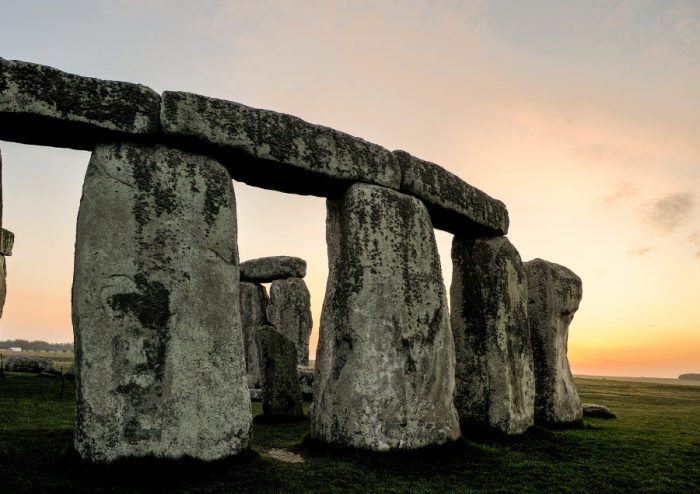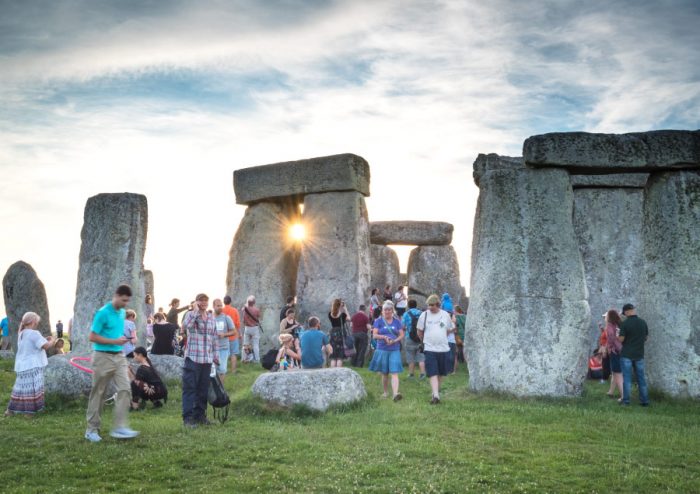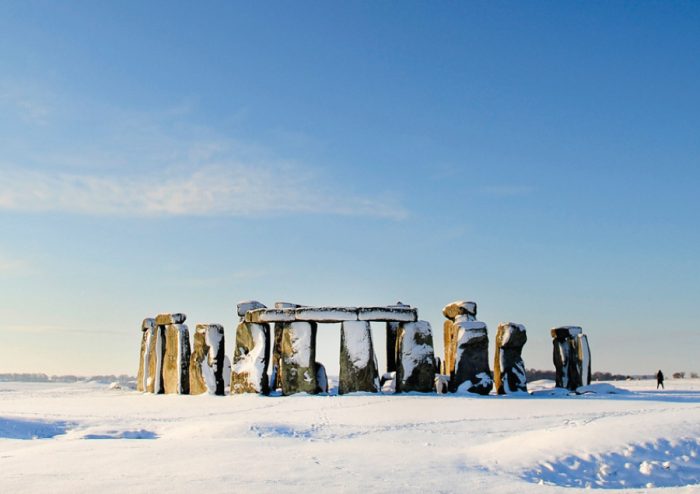One of the most talked about mysteries in the modern world, guests to Stonehenge were once given chisels on entry so they could chip off a souvenir to go home with. Today the stones are much more heavily protected, and rightly so, as they really are amazing.
Why was Stonehenge Built and What was it Used For?
Stonehenge Theories
The mystery of Stonehenge has the world’s most learned historians, archaeologists and geologists scratching their heads. Supporting the theory that the stones are a celebration of the sun and seasons, it’s possible that it was put there because it’s ideally positioned for long views in all directions, perfect for utilising the sun.
There are many theories on its original purpose, and no conclusive evidence to prove any of them. It’s one of the most versatile ancient monuments and even older than the Pyramids in Egypt.

A finalist in the race to become a modern wonder of the world, the theories about Stonehenge include:
- An ancient burial ground
- A place to study the movements of the moon and sun
- A place of pagan sacrifice
- A place for healing
One interesting theory there is a shred of proof for is that Stonehenge was some sort of ancient almanac as the stones indicate a 365.25 calendar, in keeping with the earth’s rotation around the sun.
What is certain is that it was an immensely important place of huge significance to the people that built it 5,000 years ago. Just look at how much effort and human struggle went into constructing Stonehenge.
How was Stonehenge Built and Where is it?
Standing strong, and alone, on the Salisbury Plain in Wiltshire, there are some theories about the geographical significance of the plot. One is that the Welsh blue stones and the local sarsen stones were combined to represent a symbolic political union of two different groups, at the spot directly between their spheres of influence.
Another theory is that Salisbury Plain was chosen for its flatness and ability to let sunlight into the stones. An intriguing idea but sadly, not true.
Wizards, Magic and Druids?
Historic peddler of fables, and King Arthur enthusiast, Geoffrey of Monmouth wrote his book, brazenly entitled The History of the Kings of Britain, in 1136. He states that druids and magic were responsible for Stonehenge. It was an idea believed as fact up until the late Tudor period in the 17th century.

According to Geoffrey’s ‘history’, giants brought the stones from Africa to Ireland for their healing properties. Merlin, the wizard and companion to Arthur, then flew the stones over to Salisbury. This was to make a monument commemorating a group of nobles killed in battle by the Saxons.
Old Geoff’s book was not only widely popular and published in many languages but also taken as undeniable, unequivocal fact. This popular paradigm of magic and druids associated with Stonehenge survived for nearly 600 years. It was in the 17th century when people began to question his theories of myth and magic. Even as late as 1932, Geoffrey of Monmouth’s popular idea was used as a basis of investigation when the News Chronicle paper published this headline with an alarming amount of confidence:
The Man Who Built Stonehenge Archaeologist’s Startling New
Theory
Merlin, The Egyptian Wizard
Although the theory of giants and flying stones was questioned, druids continued to play a popular part in its mystery. Influential theorists like John Aubrey and William Stukeley are largely responsible for the idea that druids built it. Arguably, the ambiguity that still very much surrounds Stonehenge means even disproved antiquated theories still have followers.
Aliens Built Stonehenge
As with anything that goes unexplained in this world, wait too long to find a solid conclusion and that special group of people will try and push forward their supernatural agendas. A one Erich von Däniken published Chariots of the Gods? Unsolved Mysteries of the Past in 1968. The book suggests that primordial alien astronauts, revered as gods, gave ancient civilisations ancient religions and technologies. Any one seen Prometheus?

This printed supernatural solution encouraged exophiles into the belief that Stonehenge was created through supernatural means. Of course, spooky sightings were soon recorded among the stones. Von Däniken also gives alien gods credit for the Pyramids, and the Easter Island Moai heads among other things. It’s like the man had no faith in human accomplishment.
Sightings of UFO’s have also been regularly reported around the stones. The area is often called a ‘magnet’ for supernatural activity by those who believe in Ley Lines. These are lines that cross the globe carrying supernatural energy between monuments and natural landforms. Despite this, the MOD closed its UFO desk in 2009 (yep it had one). This was because it was “consuming increasing resource but produces no valuable defence output”.
What could possibly be more plausible than giants, wizards and aliens?
How Did Stonehenge Actually Get There?
With some serious human effort. The sarsen stones are the iconic pillars that line the circumference of the circle. They’re made from sandstone over 60 million years old and weigh around 25 tonnes. That’s about 4 elephants or a quarter of blue whale, just saying. And all this before the invention of the wheel.
Built in stages, the final incarnation is what we see standing today. The sarsen stones are thought to have been found 25 miles north of Salisbury Plain and transported with sledges and ropes. The smaller ‘blue’ stones, however, were traced to the Preseli Hills in north Wales, 200 miles away from Wiltshire.

How did Neolithic people, with rudimentary tools and no technology, transport 4 tonne boulders such a distance?
Some historians believe sledges and rollers made of logs moved the stones onto rafts to float down the river. More recently it’s thought that the builders used supersized wicker baskets, a combination of ball bearings, long grooved planks and teams of oxen.
The Stonehenge Summer and Winter Solstice
Although historians are pretty sure that Druids had very little to do with Stonehenge thousands of years ago, modern day self-proclaimed druids flock to Stonehenge to harness the energy of the Sun every winter and summer for the Solstices.
On the 20th June every year, thousands of people from around the world descend on Stonehenge to watch the longest summer sunrise. The placement of the stones perfectly catches the sunlight, so much so, that for centuries some visitors and scientists believed the theory that Stonehenge is significant because of its position to the sun.

As mentioned above, although no evidence that the druids had anything to do with Stonehenge actually exists, Stukeley and Aubrey’s theories have been hard to shake. People continue to visit in the high summer to do yoga, meditate and more provocative activities around the stones.
Almost certainly to do with the weather, more people visit Stonehenge on the summer solstice rather than the winter solstice on 22nd December. A December chill isn’t really conducive to taking your clothes off and running around naked now, is it?
However, the winter solstice is believed to be far more important.
Heather Sebire, the English Heritage senior curator at Stonehenge, says the stones are actually far better aligned to frame the winter solstice sun. And scientists agree that the monument is more directly facing the view during the winter sunset.
Despite the lack of technology and science at the time, Neolithic farmers and builders would have known that the winter solstice was the shortest day of the year. They also knew that with the short days gone, things were going to get better. Life would get easier, and they could think about sowing their next batch of crops. So, a good reason to celebrate and give thanks for the warmer weather to come.

Stonehenge Tours
Want to try and figure out the mystery for yourself? We offer a range of Stonehenge tours to suit all temperaments and our experienced guides will let you in to all the secrets of the stones as well as even more history. Make up your own mind about the mystifying monolith and see why this sacred monument is still so popular throughout the globe.
Make sure to tag us in your mystical pictures @goldentoursuk!

